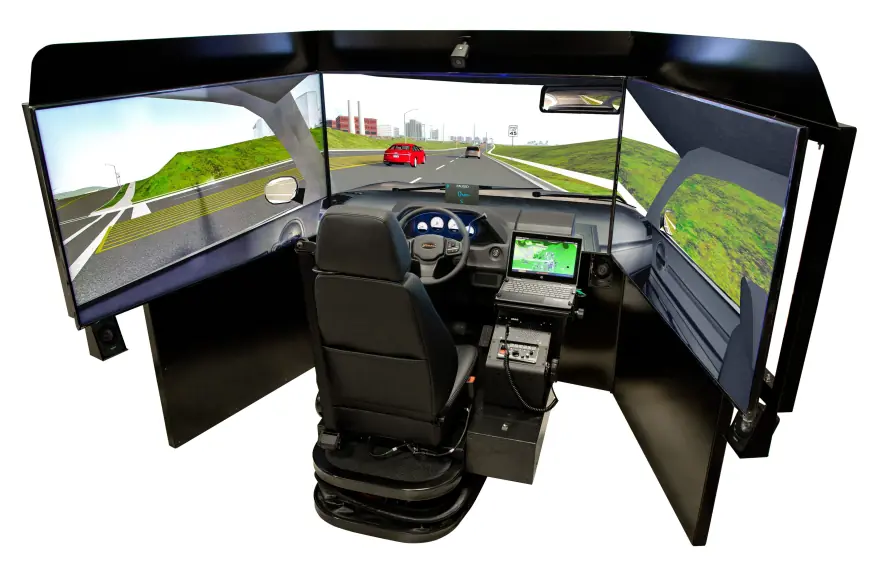Driving Simulator Market 2030: Demand & Tech Innovations
Trends in the driving simulator market are primarily influenced by the growing emphasis on innovation and digitalization in the automotive sector.

The Global Driving Simulator Market is on an accelerated growth trajectory, driven by a confluence of technological advancements, evolving transportation systems, and an increased emphasis on driver safety and training. In 2024, the market was valued at USD 679.25 million, and projections suggest that it will rise to USD 926.50 million by 2030, registering a compound annual growth rate (CAGR) of 5.31% during the forecast period.
As we navigate through an era where autonomous technology is becoming increasingly mainstream, driving simulators are no longer limited to training new drivers. Instead, they are now vital tools in automotive R&D, autonomous vehicle testing, and fleet management optimization. Governments, automotive manufacturers, research institutions, and educational organizations are embracing this transformative technology to improve safety, reduce training costs, and innovate more efficiently.
Industry Key Highlights
- Market Value (2024): USD 679.25 million
- Forecast Value (2030): USD 926.50 million
- CAGR (2024-2030): 5.31%
- Fastest Growing Region: Asia-Pacific
- Key Application Areas: Driver Training, Autonomous Vehicle Testing, ADAS Development, Military & Defense, R&D
- Top Simulator Type in 2024: Advanced Simulator
- Dominant Vehicle Segment: Passenger Vehicles
- Key Technology Trends: AI integration, AR/VR-enabled simulation, cloud-based platforms
Download Free Sample Report: https://www.techsciresearch.com/sample-report.aspx?cid=27455
Market Drivers: Fueling the Evolution of Mobility
1. Rising Demand for Safer Driver Training
Governments and institutions across the globe are prioritizing road safety. Traditional driving education, while still in use, often fails to simulate real-world complexities like hazardous weather, emergency maneuvers, or night-time driving. Simulators fill this gap by offering a risk-free, immersive learning environment. They allow learners to experience:
- Tire blowouts at high speed
- Hydroplaning during rainstorms
- Collision avoidance tactics
- Safe maneuvering under low visibility
These applications not only enhance driver competence but also improve confidence, making simulator training a cost-effective and safe alternative.
2. The Rise of Autonomous and Semi-Autonomous Vehicles
With the global automotive industry moving swiftly toward autonomy, autonomous vehicle (AV) testing has become a major growth driver. Real-world testing of AVs is expensive, time-consuming, and potentially dangerous. Simulators offer a safe, efficient, and repeatable environment to:
- Test AI algorithms in diverse virtual scenarios
- Validate perception and sensor systems
- Improve machine learning models for navigation
- Simulate traffic, pedestrian behavior, and unpredictable events
This growing reliance on simulators by OEMs, tech firms, and startups significantly boosts market momentum.
3. Integration of Advanced Technologies
The next generation of simulators is being equipped with AR/VR, haptic feedback, AI, and motion platforms to simulate hyper-realistic driving conditions. This revolution is transforming the way simulators are used:
- VR headsets for 360° visual immersion
- AI-driven modules for adaptive learning
- Real-time analytics for performance feedback
- Cloud-based simulations enabling remote access and scalability
This tech-driven transformation is making simulators increasingly indispensable in a variety of industries beyond automotive, including aviation, railways, and maritime training.
4. Growing Adoption in Research & Defense Sectors
From military driver training to vehicle performance testing, simulators have become critical tools in sectors such as:
- Defense: Training military personnel to drive in combat conditions
- Logistics: Training commercial fleet drivers for fuel-efficient practices
- Urban Planning: Simulating traffic flow and vehicle behavior for smart city development
- Aerospace: Hybrid driving-flying vehicle development and integration
Emerging Trends Shaping the Market
A. Electric and Autonomous Vehicle Simulation
As EV adoption accelerates and self-driving cars move toward commercialization, simulators are evolving to cater to new dynamics such as:
- Battery performance under various terrains
- Driver interaction with ADAS interfaces
- Integration of voice recognition and navigation aids
- Sensor fusion for 3D environment mapping
Simulators now play a crucial role in ensuring that EVs and AVs are thoroughly tested in digital twins of real-world environments.
B. Simulator-as-a-Service (SaaS)
With growing digitization, vendors are offering cloud-based driving simulators on a subscription model, reducing the upfront cost burden. Features include:
- Real-time performance tracking
- Customizable training modules
- Cross-device compatibility
- Scalable access for multiple users
This democratization is encouraging widespread adoption by smaller driving schools and fleet operators.
C. Gamification of Driving Training
The infusion of gamified elements—leaderboards, rewards, and interactive storytelling—has improved engagement in training modules, particularly among young learners. This trend is being embraced across:
- Teen driver education programs
- Commercial truck driving schools
- Police and emergency responder training initiatives
Market Segmentation Insights
By Simulator Type
- Advanced Simulator (fastest growing): Fully immersive systems featuring motion platforms, AI, and AR/VR capabilities
- Full-Scale Simulator: Offers 360° environment replication with actual vehicle cabins
- Off-Compact Simulator: Budget-friendly systems with limited features for basic training
By Vehicle Type
- Passenger Cars: Dominant segment due to high demand for new driver training
- Commercial Vehicles: Increasing adoption among logistics companies for fleet training
By Application Type
- Training and Testing: Primary application across driver schools, logistics, military, and public transportation
- Research & Development: Used by OEMs and AV developers for testing vehicle dynamics, sensor behavior, and AI algorithms
Regional Outlook
Asia-Pacific: The Fastest Growing Region
In 2024, Asia-Pacific emerged as the fastest-growing market, propelled by:
- Booming automotive manufacturing industries in China, India, and Japan
- Rapid urbanization and rise in vehicle ownership
- Government-backed road safety initiatives
- Surging interest in autonomous and electric vehicles
This region is also witnessing increased investments in simulator infrastructure, especially in driver schools and vocational training institutions.
Future Outlook
The future of the global driving simulator market appears exceptionally promising. Here's what the landscape is likely to look like by 2030:
- AI-Powered Adaptive Learning: Simulators will analyze individual performance in real-time and modify training scenarios accordingly.
- Integration with Smart Mobility Systems: Data from simulators will be used to optimize urban traffic, improve road design, and develop smarter vehicles.
- Collaborations with Automotive Giants: OEMs will increasingly integrate simulation into the early design phase, reducing time-to-market.
- Expansion into Healthcare and Rehabilitation: Simulators will aid in physical and cognitive rehabilitation for patients with mobility challenges.
- Hybrid Simulators for EV/ICE: As vehicle powertrains diversify, simulators will provide multi-mode learning modules.
10 Key Benefits of the Driving Simulator Market Research Report
- Accurate Market Forecast up to 2030 with CAGR analysis
- Detailed Segmentation by vehicle type, application, simulator type, and region
- In-depth Regional Analysis highlighting emerging opportunities in Asia-Pacific
- Comprehensive Competitive Landscape of top 10 global players
- Insightful Trends & Drivers shaping the market growth
- Technological Roadmap of simulator innovations and integrations
- R&D and Investment Opportunities for startups and OEMs
- Data-Driven Decision Making with figures, charts, and tables
- Identification of Growth Hotspots for strategic expansion
- Customized Insights Available with up to 10% free customization
Conclusion
The global driving simulator market is at the forefront of the transformation shaping tomorrow's mobility. As cities strive for safer roads and the automotive sector embraces electric and autonomous technologies, driving simulators are proving indispensable.
They provide the unique ability to simulate danger without risk, test ideas without hardware, and train drivers without fuel—making them a sustainable and strategic solution. From training teenage drivers to refining self-driving algorithms, simulators are powering progress across multiple verticals.
For stakeholders—from investors and educators to governments and engineers—this market presents not just an opportunity for profit, but a chance to make a lasting impact on how we drive, learn, and innovate.
Contact Us-
Mr. Ken Mathews
708 Third Avenue,
Manhattan, NY,
New York – 10017
Tel: +1-646-360-1656
Email: [email protected]
Website: www.techsciresearch.com
What's Your Reaction?
 Like
0
Like
0
 Dislike
0
Dislike
0
 Love
0
Love
0
 Funny
0
Funny
0
 Angry
0
Angry
0
 Sad
0
Sad
0
 Wow
0
Wow
0




















































